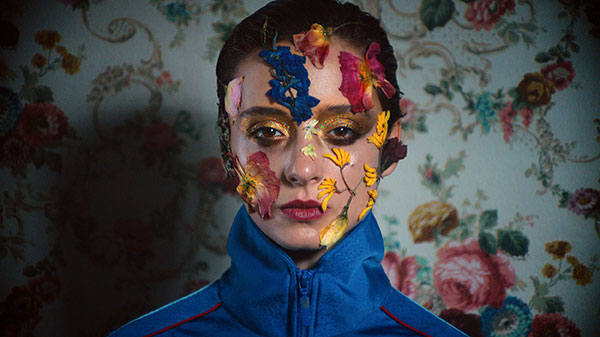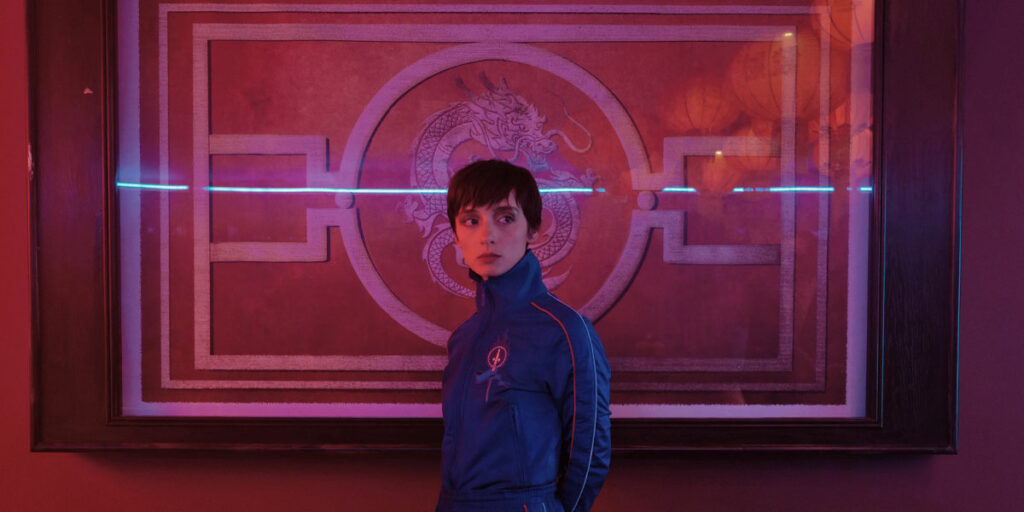While it might move at a tediously slow pace, dividing audiences along the way, Netflix’s Copenhagen Cowboy is an entrancing and illusory venture into the neon void of Nicolas Winding Refn’s mind.
Since his early days as a film director, Nicolas Winding Refn has always been a curator of titillating images, both in the beautiful and brutal nature, rapidly cementing himself amongst the stylistic provocateurs of his generation, like Lars von Trier and Gaspar Noé. However, unlike them, the Danish filmmaker and artist indulges more in hyper-stylized pulp fiction where bright neon lights are ever-present, and the scenes of sheer violence are cruel. This combination paves the way for a hypnotic haze that I find pretty fascinating – a unique yet strange cinematic experience of genre deconstructions that many directors try to replicate but fail at doing so.
After delivering his 2011 breakout hit, Drive, Nicolas Winding Refn’s project has shifted into a more self-indulgent route, but that doesn’t diminish his accomplishments. While audiences have been mixed by projects such as Only God Forgives (2013) and The Neon Demon (2016), I have found that when he’s at his most indulgent, his visual aesthetics and storytelling has been even more magnetic and creative, as well as poetic. This happens to be the opposite with other directors, but it indeed works for NWR. That applies to his latest series, the Netflix original Copenhagen Cowboy, where its unhurried pacing makes us feel its lengthy runtime, but it feels as if we are traveling through the neon void of Winding Refn’s mind.
Describing what Copenhagen Cowboy is about in a few words is difficult, because it relies on plentiful moments of silence and not much focus on the plot (or dialogue, in the matter). The central plot strand of this six-episode show goes as follows: a young, near-silent woman named Miu (Angela Bundalovic) is exploring the dark and seedy underbelly of Copenhagen to take revenge on those who have hurt her and protect the people she cares for. As the story slowly unfolds, Miu arrives at the doorsteps of some of Copenhagen’s villainous monsters and demonstrates how she deals with them without speaking more than a few words. Refn takes his fascination with exploring the seedy undergrounds of places with dark pasts and intertwines it with people’s current obsession with superheroes on-screen. In addition, he takes a story about the abusive state of masculinity and manipulation (a pet topic of sorts in his filmography) and views it through a woman’s lens.

From the get-go, it sounds a tad similar to Refn’s past work, Too Old to Die Young. However, while the two films might garner some comparisons, those who have seen most, if not all, of the director’s filmography know that he doesn’t tend to do the same thing narratively more than once. Immediately after Copenhagen Cowboy’s introductory first minutes, it switches gears into a more surrealistic state. With each episode, Copenhagen Cowboy starts to take shape and leads us into unexpected territories. This is Nicolas Winding Refn’s version of a macabre superhero story, where men squeal like pigs (a recurring motif in the series), and there are constant neon-lit dream-like sequences and 360 shots.
And it all amounts to one strange, yet highly compelling piece of work by one of modern cinema’s most distinctive creators. This series will get any fan of Nicholas Winding Refn hooked until the very end, as they will recognize all of the directorial and stylistic trademarks of the man himself. It even includes a short sequence where he channels his inner Kenneth Anger, the underground experimental filmmaker known for his stylistic short films containing elements of erotica. The quick succession includes a row of leatherbound men standing with their motorcycles while it is cut by strobing neon lights. This is a reference to Anger’s Scorpio Rising (1963). And it isn’t the first time Winding Refn does so: one of his most notable nods to Anger’s work can be seen in Drive via the famous jacket that Ryan Gosling’s character wears.
Compared to his other works, the violence and gore are slightly restrained. However, the series still contains a good amount of disturbing viciousness and animality, with scenes of decapitated heads, disfigured bodies, and feeding people to the pigs. This “toned-down” barbarity submerges us into the pragmatic settings of Winding Refn’s version of Copenhagen. He doesn’t need to show constant violence to create tension: by leaning on silence and the actor’s fantastic facial expressions, Refn can set up villainous acts.
At the same time, the kaleidoscopic imagery of the genre deconstructions – where crime, thriller, and fantasy are melted down into cryptic neon and techno venture – delivers a stunning hypnagogic effect, those hallucinations and perceptual experiences that occur during the transition from wakefulness to sleep. The beauty of the images comes from their distinctiveness and boldness. Some might argue that it is style over substance. And although there are moments where it might be the case, I feel as Refn offers enough space for creativity in the visual realm and interpretation for its thematic analysis.
As it transitions from one stunning image to another, it feels as if dreams/nightmares are constantly fighting with one another, where the harsh reality of criminal activity is intertwined with that world’s supernatural acts. Like in The Neon Demon, Copenhagen Cowboy‘s initial episodes feel like a fairytale trapped within the confines of a dream. And as its story develops, that dream turns into a nightmare for everyone involved in that world. Even though there’s an element of repetition in the story and stylistic endeavors, each episode doesn’t feel tedious or redundant.
There might be occasions in which you wish things would happen quicker, that the rampage arrives sooner rather than later, but, with patience, Copenhagen Cowboy delivers on all accounts of the genres it is blending. As the credits roll for each episode, you are woken up from the hypnotic trance of Winding Refn’s filmmaking. The scenes you have just seen are stuck in your mind as you try to piece together the puzzle within the story. You start to seek the meaning of those images and sequences, and everyone is likely to have a variety of opinions on the matter.
The director’s inclination toward provocation is captured in Copenhagen Cowboy, this time around, not by the ultraviolence but by its visualization, which is occasionally poetic. Winding Refn is not keen on explaining what his pictures (or specific scenes) are about, so everything is up to interpretation. Not many directors can constantly create such beautiful yet haunting images. From lavishly detailed sets to colorful lighting, every frame feels like it should be part of an art installation. If you pause the series at a random moment, you will always end up with a startling image.
That’s one of the reasons why I compare him to Lars von Trier and Gaspar Noé. Although they are very different directors and tackle diverse topics, the way these three outstanding filmmakers can conjure haunting or striking images with ease is just awe-inspiring. I love this filmmaking approach, but many will have difficulty connecting with it if they aren’t accustomed to viewing something of this nature. The lack of plot development and slow pacing might cause plenty of viewers to tune off immediately, because Copenhagen Cowboy takes its time exploring its territory. Yet, the creativity and artistry, as well as the visual and tonal command by Refn, are so experimental that your eyes are glued to the screen.
This isn’t Nicolas Winding Refn’s Twin Peaks: The Return (David Lynch), nor is it his The Kingdom: Exodus (Lars Von Trier) – that is, “the last hoorah” for an acclaimed and artistic director who has worked in television and film, because I do think he has more to deliver to us. However, there’s this sensation that we aren’t going to get such a unique and ingenious project from him anymore, not because he doesn’t want to, but because he won’t be given a chance. The series isn’t a curtain closer to his work, but it might be the last time we see something of this stature by him. Copenhagen Cowboy offers something vastly different and audacious to those with a Netflix subscription. The series’ ending offers a possible next venture into this mad world Nicolas Winding Refn has created, and I sure hope we get to revisit it. But if this is the only glimpse we get, it was worth the long wait.
Cophenhagen Cowboy is now available to watch on Netflix.

